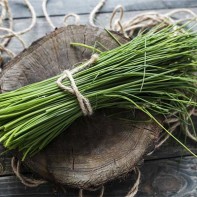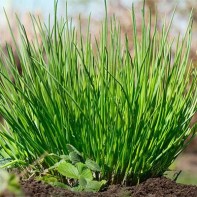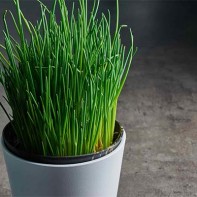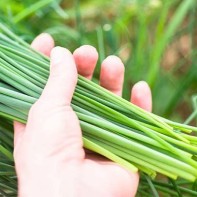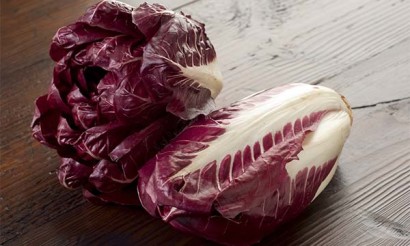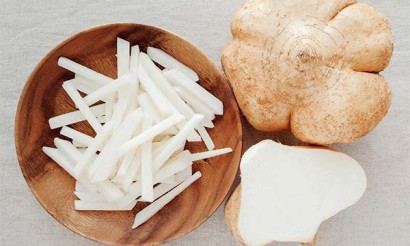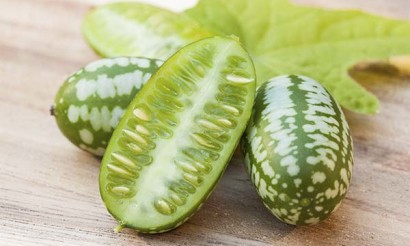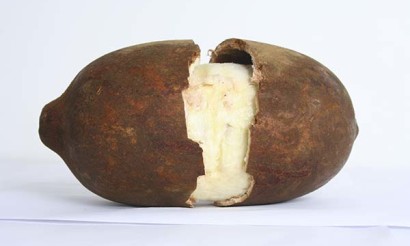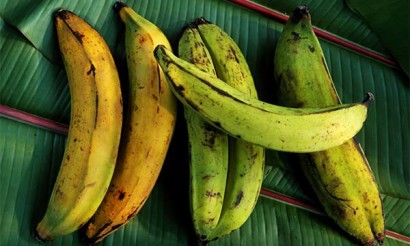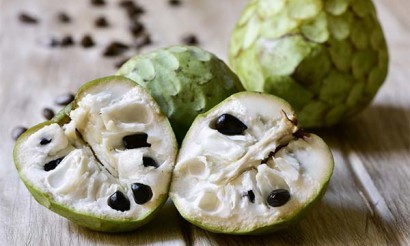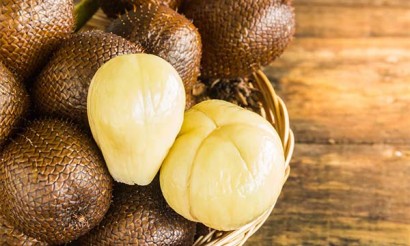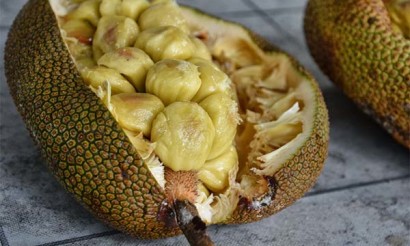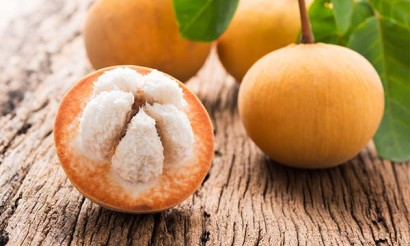Chives: what kind of vegetable is it and why is it useful?
Chives are the earliest type of onion. The plant is rich in useful substances, so it is used immediately after the first sprouts. For food, not the bulbs, but the feathers are used. They are put in a variety of dishes to give flavor and special taste. Scientists believe that eating such onions is useful for the work of the kidneys, the cardiovascular system, as well as to improve overall health and increase immunity.
- What is this vegetable
- What it looks like
- Where does it grow?
- How useful are chives
- What harm can it do?
- How do you eat chives?
- What to cook with chives
- Traditional Medicine
- Cosmetic use
- Face Mask for oily skin
- Face compresses for blackheads and acne
- Hair Loss Mask
- Tincture against dandruff
- How to grow chives
- Way 1: Planting seeds
- Way 2: Planting seeds
- Method 3: Dividing the onions
- Interesting facts about chives
What is this vegetable
Schnitt onion is a type of onion that has been grown since the 16th century and used as a medicinal and healing plant. This species has many names, which may vary depending on the region of cultivation: Italians and Portuguese call the culture "English onion", while the Slavs and Greeks are accustomed to the name "skoroda". Officially, the species has two names: chives and chives. It is also popularly called a winter onion, because it easily adapts to any, even frosty, natural conditions.
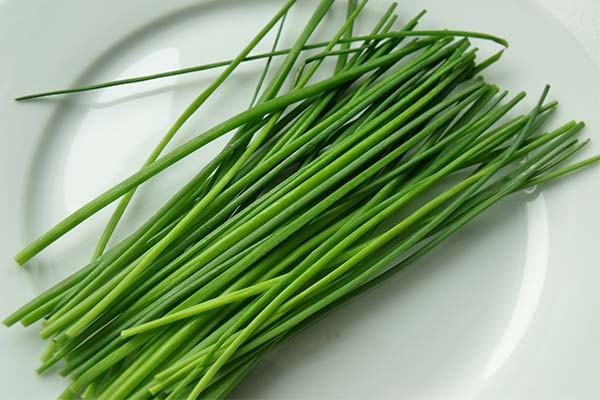
It is native to Mongolia, China, and Russia (specifically, Siberia). Now the culture is grown in Europe, North America, on the islands of the Pacific. Only recently a type of onion began to be eaten as a stand-alone product or a seasoning.
In addition to eating, chives can be used in landscaping the site: the flowers of the plant are bright, can have pink and purple color. There are only two main species of chives: Siberian and alpine (Russian). The bulb has a distinct aroma. It is rarely eaten because it is very dense. The plant has a long flowering period and is frost-resistant (especially the Siberian species of chives).
What it looks like
The feathers are green in color, thin, and can reach 50 cm in height. Bulbs are small in size, dense, hard. The chives begin flowering in May. The flowers are pink or purple in color.
Where does it grow
Chives grow in Europe, Central Asia, the European part of Russia, the North Caucasus, Siberia, North America. The plant has a high resistance to frost, but does not like drought. It prefers to grow in damp soils. Flowering begins in May. Ripening occurs in late July to early August.
What are the benefits of chives
The plant gives its first sprouts immediately after the snowfall in the spring. Thanks to this, residents of northern regions get a lot of vitamins after the winter period. The taste of the onion is not very spicy, and the composition has many useful trace elements: vitamins A, B, C, as well as mineral salts (iron, potassium, etc.), amino acids, useful sugars and many other vitamins. In terms of the presence of vitamins of the three groups in the composition, chives surpass all their relatives from the Onion family.
Good composition has a great effect on the human body, weakened after winter frosts and colds. Consumption of chives in food increases immunity. The substances in the composition also increase the resistance of the human body to infectious diseases. In addition, onions are a low-calorie product that can be eaten by anyone who is losing weight.
Consistent consumption of chives helps fight kidney, cardiovascular and gallbladder problems. The vegetable increases the appetite than increases the secretory activity of the gastrointestinal tract. Thanks to this, all the useful substances in the taken food are absorbed by the body faster, saturating it with everything it needs for good health.
Also the use of chives helps people with vision problems: useful substances allow you to maintain visual acuity longer, prevents the emergence and development of atherosclerosis.
What harm can come from
In general, the product has no particular contraindications. But still it is advised to refrain from eating chives to those who suffer from digestive diseases such as ulcers, pancreatitis and others. Also with caution should eat the vegetable for people with tachycardia: with constant consumption of chives increases heart rate, as well as vascular tone, which can lead to frequent headaches and migraines. People with migraines are also better off cutting onions out of their diet. Patients with damaged liver are strictly forbidden to use the product.
In addition, the manifestation of individual intolerance in the form of allergic reactions is possible. If symptoms of allergy occur after consumption, it is necessary to remove chives from the menu.
How chives are eaten
Most often, chives are consumed in cooking. Usually the plant is used raw: any heat treatment kills the taste qualities of the onion and its useful properties. Only the feathers are used because the bulbs are too hard to eat. Onion leaves can be combined with meat, fish, vegetables.
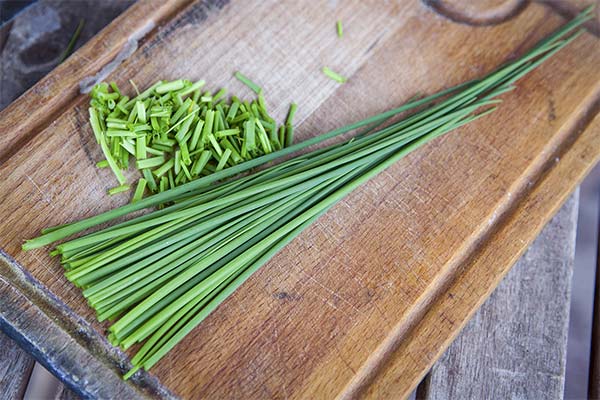
Also onions are great in vegetable salads. Can be a great filling for egg pies. It tastes nice, not acrid and not too spicy. Gives a dish a pleasant aroma of onion and garlic. This flavor and aroma allows chives to be used for marinades and pickles.
Do not add chives to legume dishes such as peas, beans, and asparagus. When these crops are combined with onions, the legumes lose their original flavor and aroma, so it is useless.
Onions make delicious sauces, gravies, and appetizers for main dishes. Feathers can be eaten as an independent product. Low calorie allows you to use onions to prepare dietary dishes and give them a pleasant, appetizing flavor.
What you can make with chives
Fresh chives can be used to decorate dishes or make salads. Mostly with its addition are prepared such dishes as:
- Vegetable salad with onions.
- Soups.
- Pates (fish and meat).
- Homemade sausages.
To give a special flavor and aroma to the dish, simply add onions to the salad along with the other ingredients. Soups and other hot dishes are cooked without chives feathers. The plant is added to dishes immediately after removing from the fire. This way the onion will not lose the incredible flavor and healthy vitamins in the composition. You can also add the vegetable to homemade sausages. This will give the delicacy an even more interesting taste and smell.
Use in folk medicine
Chives are actively used in folk medicine. Juice mixed with honey, for example, has two uses: internally and externally. Internally, the mixture is used to reduce blood pressure. The external method should be used as a compress on places with blisters. Such a lotion will allow a wound or tear to heal more quickly.
You can also make an alcoholic tincture from chives that helps with many diseases and ailments. It should be taken internally twice a day, a little at a time. 1-2 tablespoons of onion-alcohol tincture will help patients with anemia, as well as reduce fatigue and boost immunity.
The plant can prevent the formation of fungus on the feet. To do this, rub the juice of chives into the feet for 1-2 weeks.
Cosmetic Applications
And in cosmetology, this type of onion succeeds. Among the recipes for self-care, the most famous are:
Face mask for owners of oily skin
To prepare it, you will need an egg, starch and mashed chives feathers. The entire mixture should be evenly distributed on the face and left for 10-15 minutes. After thoroughly rinse your face with warm water. After wiping the face, you need to apply a moisturizing day cream. It is recommended to use once or twice a week.
Compresses for acne and pimples
To get rid of such skin problems, crushed onion leaves are placed in gauze and applied to the affected areas for 20-25 minutes. The recipe is also used to combat freckles.
Mask for hair loss
Excellent copes with onion chives and hair loss. To eliminate the problem, you need to crush onion feathers and thoroughly rub into the scalp. After washing the mixture from the hair. For the best results, it is recommended to use such an onion mask for 2 months. Also, this method helps to fight dandruff.
Tincture against dandruff
There is a more serious remedy for dandruff from onion chives. You need to mix onion feathers (or rather their puree) with 1-2 tablespoons of alcohol. Rub into the scalp for 20-25 minutes before water procedures. It is also recommended to use for 90 days.
How to grow chives
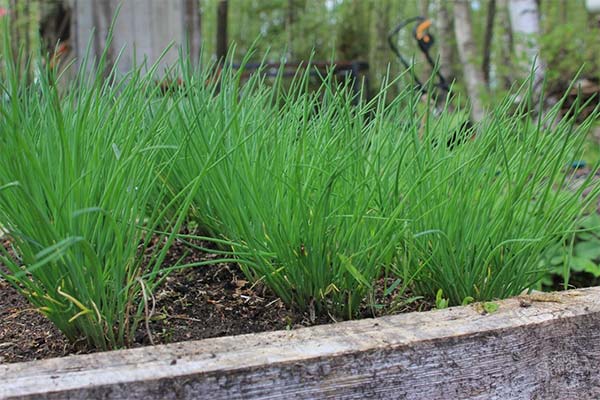
Method 1: planting seedlings
To grow chives, you must first plant a seedling. This is very easy to do at home. You should start the growing process as early as March-April.
- In a container with the future onion, put the necessary amount of soil.
- Water the soil.
- Dip the onion seeds into the moist soil.
- Sprinkle sand on top.
- Cover the boxes with cling film and put them in a dark corner.
- Remove the film every day for airing and watering.
- After the first sprouts appear in the containers, remove the film finally and move the boxes to a bright place.
Next, transplant the sprouted seeds into the open ground. April is considered the best time for this. The ground should be prepared in advance: remove all weeds, fertilize the soil, make holes (about 1.5 cm deep). In one hole you can put 3-4 plants. Water the planted onions. Afterwards, water when the soil dries out so as not to flood the plant. The propagation method allows you to try onions in the first season, while other methods require you to wait one season without a harvest at least.
Method 2: Planting seeds
Before planting in the ground, onion seeds should be moistened: if the water balance of the soil will be constantly and regularly maintained, you can not do this.
- Loosen the soil.
- Make small furrows in the ground.
- Water it with water.
- If you need to fertilize the soil, put fertilizer in with the water.
- Put a lot of seeds in the ground.
- Fill them with soil.
- Water if necessary.
With this method of planting onions, the first year you should not pluck the feathers. This will help them get stronger and give a good and healthy crop next season.
Method 3: division of onions
This method is the easiest and most convenient. After the onion has grown, you can divide it. To do this, it is necessary:
- Carefully dig up the onion and divide several parts of 8-10 roots in each.
- Dig out the holes and water them.
- Plant onions to a depth of 3-3.5 cm.
- Actively water the planted plants.
In this way you will get a large crop of chives in a few seasons.
The plant can be fertilized. The best fertilizers for chives are poultry manure and cowpea infusion. Also fertilize beds can be organic fertilizer with a base of phosphorus or salts.
Onions do not flower in the open ground in winter. Nevertheless, he can grow in the frost: before the end of the gardening season and the onion cold weather, you can dig up the onion and transplant it into a container or a large flower pot at home.
Interesting facts about chives
- Schnitt onions, as mentioned above, are not added to legumes due to the fact that they lose their flavor when combined with the plant. In addition, the presence of the vegetable will make any bean dish taste a little bitter.
- Freshly sliced, chives retain their health benefits for only 15 minutes. It is better not to put the food in the refrigerator if you want to get not only the taste pleasure of eating it, but also the health benefits.
- Chives are only good fresh. It should not be heated or frozen. The properties and useful substances in the composition immediately lose power.
- Schnitt onion as a seasoning for food was first used by the Chinese. Until then, onions were grown and harvested only for medicinal purposes.
Schnitt onion is an interesting plant that has found great love among gardeners, which is absolutely justified. The unpretentiousness in care, as well as the useful properties of the plant make it grow from year to year in their beds. Onions give incredible taste and flavor to any dish, as well as nourish the human body with everything it needs to maintain health and improve immunity.
«Important: All information on this site is provided for informational purposes only. for informational purposes only. Please consult with your health care professional before using any of the recommendations. specialist before using any of the recommendations. Neither the editors nor the authors shall be liable for any possible harm caused by materials."

